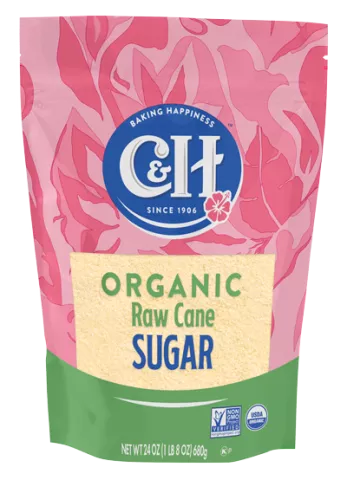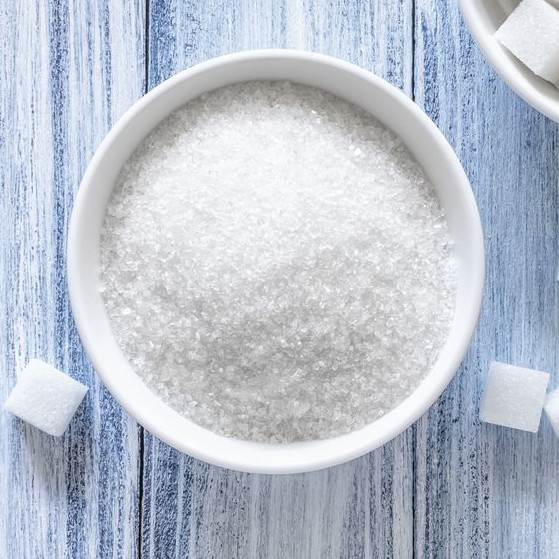Recognizing Cane Sugar Processing: A Comprehensive Overview of the Stages
Recognizing Cane Sugar Processing: A Comprehensive Overview of the Stages
Blog Article
An In-Depth Guide to the Ecological Influence and Sustainability Practices in Walking Cane Sugar Processing
The environmental effect of walking cane sugar handling offers a complex range of difficulties that warrant cautious examination. From soil degradation and extreme water use to the carbon impact linked with farming and manufacturing, the consequences of conventional practices are far-reaching. In contrast, the adoption of ingenious sustainability actions offers a path towards extra liable manufacturing approaches. Understanding the interplay between these problems is essential for stakeholders in the industry. What particular techniques can be implemented to strike an equilibrium between performance and environmental stewardship? The solutions depend on a more detailed check out both the difficulties and potential solutions.
Review of Walking Cane Sugar Processing
Walking cane sugar processing entails a series of systematic actions that transform sugarcane right into refined sugar. Originally, gathered sugarcane is carried to processing facilities, where it undertakes cleaning up to remove dirt and debris. Following this, the walking stick is squashed to draw out juice, which is after that clarified by getting rid of impurities with home heating and the addition of lime.
The made clear juice undergoes evaporation, where water is gotten rid of to concentrate the sugar content. These crystals are separated from the continuing to be syrup making use of centrifugation, resulting in raw sugar.
The end product is after that dried out and packaged for distribution. Throughout this entire process, preserving performance and quality assurance is vital to ensure the sugar meets market requirements. Each action in cane sugar processing not only adds to the final product but also has implications for resource use and waste generation, establishing the stage for conversations on sustainability and ecological effects related to sugar manufacturing.
Ecological Challenges of Production
The production of walking stick sugar presents several significant environmental challenges that warrant focus. One key worry is the extensive use agrochemicals, consisting of pesticides and fertilizers, which can lead to dirt deterioration, biodiversity loss, and contamination of regional water resources. The overflow from sugarcane fields usually lugs these chemicals right into close-by ecological communities, interfering with marine life and influencing the wellness of neighborhoods reliant on these water bodies.
An additional challenge is the high power consumption related to sugarcane handling. The boiling and refining phases call for considerable heat, primarily generated by melting nonrenewable fuel sources, contributing to greenhouse gas exhausts. Furthermore, the expansive land location needed for sugarcane cultivation can lead to logging and habitat devastation, additional intensifying climate adjustment and threatening wild animals.
In addition, the labor methods in some regions elevate honest issues, as employees may face bad working conditions and poor salaries. This situation often perpetuates a cycle of poverty in regional neighborhoods. Cane Sugar Processing. Addressing these ecological challenges is critical for establishing extra sustainable methods in walking cane sugar manufacturing, ultimately benefiting both the environment and the neighborhoods associated with this sector
Water and Land Usage Influence
Water resources and land application are vital parts in the cane sugar market that significantly influence the atmosphere. The cultivation of sugarcane requires considerable water input, with price quotes suggesting that it can take in as much as 2,000 litres of water per kilo of sugar created. This extensive usage of water typically results in deficiency of local water sources, impacting not only the sugarcane vineyards yet additionally surrounding environments and areas that depend on the very same water resources for agriculture and residential usage.

Furthermore, land usage for sugarcane cultivation can cause deforestation and the conversion of all-natural habitats into monoculture haciendas. This method lessens biodiversity, interrupts neighborhood environments, and adds to soil degradation. The growth of sugarcane areas frequently intrudes on useful agricultural land, developing competition for resources in between food and biofuel manufacturing.
Lasting methods, such as optimizing watering strategies and executing crop rotation, are vital to alleviate these influences. By adopting Resources much more reliable water use and land management approaches, the cane sugar market can minimize its ecological impact, making certain an equilibrium in between farming productivity and ecological preservation.
Greenhouse Gas Emissions
Greenhouse gas emissions represent a substantial ecological issue within the walking stick sugar handling sector, specifically as farming techniques expand to meet global demand. The cultivation of sugarcane, a crop that thrives in tropical climates, depends heavily on synthetic fertilizers and pesticides, which contribute to nitrous oxide discharges. Furthermore, land-use modifications, consisting of logging for new sugarcane plantations, launch carbon dioxide kept in greenery and soil.
Throughout handling, energy consumption is an additional major source of greenhouse gas exhausts - Cane Sugar Processing. Several sugar mills use fossil fuels to power machinery and create warm, resulting in substantial carbon impacts. Furthermore, the transport of raw sugarcane and completed products includes layers of discharges through gas combustion in vehicles
This entails evaluating present farming techniques, processing techniques, and transport systems to recognize locations for renovation and mitigation. Attending to greenhouse gas exhausts is important for promoting an extra lasting cane sugar market in a changing environment.

Sustainable Practices and Innovations
Lasting practices and innovations are significantly crucial in the cane sugar handling market as stakeholders look for to decrease environmental effects while maintaining performance. One significant innovation is the application of incorporated crop administration, which enhances source usage by integrating dirt management, parasite control, and crop turning techniques. This technique enhances yield while decreasing chemical inputs and protecting dirt health and wellness.
Furthermore, the fostering of renewable resource resources, such as biomass from sugarcane residues, has obtained traction - Cane Sugar Processing. By transforming waste items into energy, refining facilities can decrease their reliance on fossil fuels, consequently decreasing greenhouse gas discharges
Water administration techniques have likewise seen renovations through the recycling and reusing of water in processing plants, dramatically reducing freshwater usage. Advancements in modern technology, such as precision farming, make it possible for farmers to monitor crop health and wellness and source use more efficiently, making sure lasting cultivation practices.
Additionally, accreditation programs like Fair Profession and Rain forest Alliance encourage environmentally responsible farming techniques and advertise social equity within the supply chain. By embracing these lasting practices and technologies, the cane sugar processing industry can enhance its resilience and contribute positively to environmental stewardship.
Conclusion
The environmental impact of cane sugar processing offers substantial obstacles, consisting of dirt deterioration, high water usage, and greenhouse gas discharges, alongside ethical issues connected to labor methods. article Dealing with these problems through sustainable practices, such as incorporated plant administration, sustainable energy adoption, and water recycling, is essential. By advertising socially equitable and eco liable techniques in sugar production, the industry can mitigate its damaging results, making sure a more sustainable future for both communities and communities included in this industry.
Cane sugar handling entails a series of methodical steps that change sugarcane into polished sugar. Each step in walking stick sugar processing not only adds to the last item however likewise has effects for source use and waste generation, establishing the phase for conversations on sustainability and environmental influences associated with sugar production.
Greenhouse gas exhausts stand for a substantial environmental problem within the walking stick sugar handling market, specifically as agricultural techniques expand to fulfill global need.Lasting practices and innovations are significantly important in the walking stick sugar handling market as stakeholders look for to decrease ecological impacts blog here while preserving performance.The environmental effect of walking cane sugar processing provides substantial obstacles, including dirt deterioration, high water intake, and greenhouse gas discharges, alongside honest problems related to labor practices.
Report this page